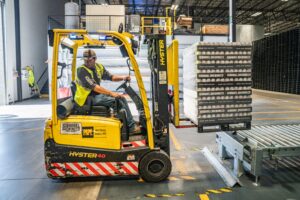We’re now several months into a global pandemic that’s accelerated the adoption of new technologies faster than any other driver to date. In this blog, Tata Communications’ Sushil Nalawade, AVP – Americas, looks at what businesses have learnt so far – and what’s next as we navigate the new normal.
As countries begin to emerge from nationwide lockdowns, it seems as if we’re entering a more nuanced phase of the pandemic. But it’s one in which there’s still plenty of debate around what the future of the digital workplace will look like.
I’ve been speaking to some customers whose experience is that working from home has actually increased efficiency. For others, the very nature of what they do means they have to get back to the office or factory. 
That’s why I was fascinated to hear first-hand accounts from 25 enterprise technology leaders at our summer roundtable, ‘Building Your New Digital Workplace Strategy’.
And while opinions differed around how far into the future this acute remote landscape will extend, there seemed little doubt that the pandemic has accelerated the move towards a new working environment that was – in many ways – inevitable.
“Instead of the new normal, we’re beginning to talk about the next normal. Where the pandemic was an accelerator for changes already well underway.”
Here at Tata Communications, we were well set up for a remote working model, with a distributed workforce already equipped with cloud-based tools and the necessary security processes for safe and effective home working. However, for businesses in other sectors, there was undoubtedly a more dramatic shift.
Enterprise technology teams across the world have done an incredible job in spinning up virtual capabilities to meet the needs of a remote workforce overnight.
Now though, tech leaders are revisiting their remote access technologies – re-examining configurations, and re-evaluating the governance around collaboration platforms, file sharing and information protection. As enterprises embrace the opportunities of the virtual workplace, we’re seeing a shift from survival mode to success mode.
Because as our roundtable panellists discussed, there are significant benefits for businesses that can pivot their infrastructure to support secure remote working beyond the current crisis.
This is something Visteon, who was on the panel too, has long recognised. The company’s agile, secure hybrid network – deployed and managed by Tata Communications – enabled Visteon to quickly adapt to pandemic priorities. The network could easily scale to support new working conditions, with a remote access solution based on our cloud-based security services. And because it’s a managed service, Visteon could stay focused on the evolving needs of its business and users.
 The question of user experience is something we’re hearing from businesses on the panel and beyond. How do we ensure employees are (even more) productive in a new environment – while maintaining effective security and performance? And how can we continue to support our customers with a superior service that differentiates our offering?
The question of user experience is something we’re hearing from businesses on the panel and beyond. How do we ensure employees are (even more) productive in a new environment – while maintaining effective security and performance? And how can we continue to support our customers with a superior service that differentiates our offering?
On a purely fundamental level, network reliability is going to be critical. As is visibility over network operations and applications, so enterprises can act quickly to address any problem areas. This becomes even more mission-critical for the increasing number of businesses operating in a hybrid environment, and is leading IT teams to deploy more investigative tools to gain greater endpoint visibility – and therefore control.
Endpoint visibility goes hand-in-hand with endpoint security, and secure remote access was high on our roundtable agenda.
“With employees using personal devices to connect from home, endpoint security is now essential.”
The attack surface has grown exponentially. So, enterprises are beginning to consider all the ways in which their workforce is accessing the network – and putting in place targeted threat defence accordingly.
We talked a lot about how AI and machine learning can enhance productivity by automating business processes. And this is something the panellists were keen to harness to improve their security posture too. By using automation to assess alerts, security teams will have the visibility and context to focus efforts on the most pressing issues.
It’s a challenging time but it’s exciting too. The situation has created a climate – and appetite – for change that we really haven’t seen before.
From the very top, business leaders are realising the commercial advantages of a virtual workforce. So, like many of the panellists, I think a cultural shift has taken place whereby digital transformation will be driven from the top down. This opens up the opportunity to innovate and reshape every aspect of the enterprise environment. 
As economies recover from the pandemic, businesses have the chance to redefine the way they operate – and make significant gains as a result. Whether it’s through the secure workplace solutions that support productive remote environments, or digital customer experience platforms that cater for the contactless economy, we’re supporting customers to become digital-first enterprises that can deliver secure connected digital experiences.
The tech leaders I spoke to are already pivoting their workplace strategy to enhance collaboration, productivity and security. They hail from a range of industries, each with different challenges and experiences to share.
Discover more about secure connected digital experiences in the post-pandemic world.
Transformational Hybrid SolutionsOur cloud-enablement services offer the best performance on your traffic-heavy websites or mission-critical applications.
Core NetworksTata Communications™ global IT infrastructure and fibre network delivers the resources you need, when and where you need them.
Network Resources
Unified Communications As A ServiceBreak the barriers of borders efficiently and increase productivity with Tata Communications’ UC&C solutions.
Global SIP ConnectEmpower your business with our SIP network and witness it grow exponentially.
InstaCC™ - Contact Centre As A ServiceCloud contact centre solutions for digital customers experience and agent productivity.
Unified Communication Resources Case studies, industry papers and other interesting content to help you explore our unified communications solution better.
IoT SolutionsThe Internet of Things is transforming the way we experience the world around us for good. Find out more about our Internet Of Things related solutions here.
Mobility SolutionsTata Communications’ mobility services enable your enterprise to maintain seamless communication across borders, with complete visibility of cost and usage.
Mobility & IoT Resources
Multi-Cloud SolutionsWith enterprises transitioning to a hybrid multi-cloud infrastructure, getting the right deployment model that yields ROI can be a daunting task.
Cloud ComplianceCompliant with data privacy standards across different countries and is also designed to protect customers’ privacy at all levels.
IZO™ Cloud Platform & ServicesIZO™ is a flexible, one-stop cloud enablement platform designed to help you navigate complexity for more agile business performance.
Managed Infrastructure ServicesIntegrated with our integrated Tier-1 network to help your business grow efficiently across borders.
Cloud PartnersWe support a global ecosystem for seamless, secure connectivity to multiple solutions through a single provider.
Cloud Resources
Governance, Risk, and ComplianceRisk and Threat management services to reduce security thefts across your business and improve overall efficiencies and costs.
Cloud SecurityBest-in-class security by our global secure web gateway helps provide visibility and control of users inside and outside the office.
Threat Management - SOCIndustry-leading threat-management service to minimise risk, with an efficient global solution against emerging security breaches and attacks.
Advanced Network SecurityManaged security services for a predictive and proactive range of solutions, driving visibility and context to prevent attacks.
Cyber Security ResourcesCase studies, industry papers and other interesting content to help you explore our securtiy solution better.
Hosted & Managed ServicesTata Communications provide new models for efficient wholesale carrier voice service management. With our managed hosting services make your voice business more efficient and better protected
Wholesale Voice Transport & Termination ServicesYour long-distance international voice traffic is in good hands. End-to-end, voice access & carrier services which includes voice transport and termination with a trusted, global partner.
Voice Access ServicesTata Communication’s provide solutions which take care of your carrier & voice services, from conferencing to call centre or business support applications.
Carrier Services Resources
CDN Acceleration ServicesOur CDN Web Site Acceleration (WSA) solution helps deliver static and dynamic content, guaranteeing higher performance for your website.
CDN SecuritySafeguard your website data and customers’ information by securing your website from hacks and other mala fide cyber activities.
Video CDNDeliver high-quality video content to your customers across platforms – website, app and OTT delivery.
CDN Resources
Elevate CXIncrease customer satisfaction while empowering your service team to deliver world-class customer experience and engagement.
Live Event ServicesTata Communications’ live event services help battle the share if eyeballs as on-demand video drives an explosion of diverse content available on tap for a global audience.
Media Cloud Infrastructure ServicesTata Communications’ media cloud infrastructure offers flexible storage & compute services to build custom media applications.
Global Media NetworkTata Communications’ global media network combines our expertise as a global tier-1 connectivity provider with our end-to-end media ecosystem.
Use CasesUse cases of Tata Communications’ Media Entertainment Services
Remote Production SolutionsMedia contribution, preparation and distribution are highly capital-intensive for producers of live TV and video content, and their workflows are complex.
Media Cloud Ecosystem SolutionsThe Tata Communications media cloud infrastructure services offer the basic building blocks for a cloud infrastructure-as-a-service.
Global Contribution & Distribution SolutionsTata Communications’ global contribution and distribution solution is built to reduce capital outlay and grow global footprint.
Satellite Alternative SolutionsAs more and more consumers choose to cut the cord & switch to internet-based entertainment options, broadcasters are faced with capital allocation decisions.
LeadershipA look into the pillars of Tata communications who carry the torch and are living embodiment of Tata’s values and ethos.
Culture & DiversityHere at Tata Communications we are committed to creating a culture of openness, curiosity and learning. We also believe in driving an extra mile to recognize new talent and cultivate skills.
OfficesA list of Tata Communications office locations worldwide.
FAQCheck out our FAQs section for more information.
SustainabilityOur holistic sustainability strategy is grounded in the pillars of People, Planet and Community with corporate governance at the heart of it.
BoardHave a look at our board of members.
ResultsFind out more about our quarterly results.
Investor PresentationsFollow our repository of investor presentations.
FilingsGet all information regarding filings of Tata communications in one place.
Investor EventsAll investor related event schedule and information at one place.
GovernanceAt Tata, we believe in following our corporate social responsibility which is why we have set up a team for corporate governance.
SharesGet a better understanding of our shares, dividends etc.
SupportGet all investor related contact information here.


